We don’t know where they come from, where they go, and what impact they have on the environment and human health. Nina Notman talks to the scientists finding the answers
Twenty years ago, the University of Plymouth’s Richard Thompson coined the term ‘microplastics’ in a groundbreaking paper in Science magazine. Since then the research field has grown exponentially along with public awareness of the issue. Significant regulatory wins achieved during this time including UK, EU and US bans on adding plastic microbeads to face scrubs, shower gels and other cosmetic products that are washed down the drain after use.
And as scientists have become more confident about the sources and impacts of the microplastics visible to the naked eye, some have started to turn their attention to the smallest of the microplastics – nanoplastics. The term has no formal definition, but it is typically used to describe plastic pieces that are smaller than 1000nm. For comparison, microplastics are pieces of plastic less than 5mm.
Nanoplastics were first catapulted into the public consciousness by press coverage of the 2019 paper by Nathalie Tufenkji from McGill University in Montreal, Canada, that described their release in high numbers from plastic teabags into our cuppas. Other papers that have received extensive media coverage since then include those reporting high concentrations of nanoplastics in snow on remote peaks in the Alps and in bottled water.
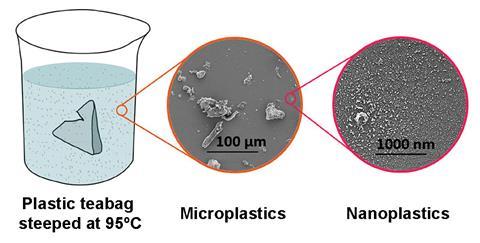
‘I don’t think it’s surprising that there’s nanoplastic pollution everywhere,’ says Denise Mitrano, an environmental analytical chemist at ETH Zürich in Switzerland. ‘Nanoplastics are colloids that move through air, water, every vector you can think of,’ adds James Chapman, an analytical chemist at Griffith University in Queensland, Australia. ‘The assumption is that they are everywhere.’
Analytical advances
But just because something is known to be somewhere, it doesn’t necessarily mean it is easy to detect. No single comprehensive method exists yet for finding and identifying nanoplastics in complex environmental samples.
Pyrolysis gas chromatography mass spectrometry (GC–MS) is one often-used approach. It provides information on the bulk chemical composition and concentrations of nanoplastics, but not on their particle size or morphology. Conversely, techniques such as optical microscopy can provide particle size and morphology information, but cannot reveal chemical composition. Spectroscopic methods, such as infrared (IR) and Raman, can provide particle chemical composition information though they can struggle with very small particle sizes.

This lack of a comprehensive analytical technique led to incorrect assumptions in some of the early nanoplastic papers. Scientists thought that every nanoparticle they observed in samples was a nanoplastic. Further work, however, showed that some nanoparticles were actually clumps of oligomers. These oligomers form from incomplete polymerisation during the manufacturing process and then escape from plastic items during use or once in the environment.
This oligomer confusion is now starting to be addressed in the literature. In February 2024, for example, Bernd Nowack, an expert in nanomaterial hazard assessment, and his colleagues at the Swiss Federal Laboratories for Materials Science and Technology in St. Gallen published a paper correcting the record regarding the number of nanoplastics released from polyester fabrics during washing. In an earlier paper, his team had assumed all the nanoparticles it observed being released from the fabrics were nanoplastics. Now the scientists have reported that, depending on the fabric type, 34–89% of the nanoparticles were not in fact nanoplastics. ‘Now we are saying that scientific progress has shown us that not all of it is plastic,’ says Nowack. They worked this out by trying to dissolve the collected nanoparticles in ethanol. ‘If they dissolve, then they are an oligomer or another additive. The plastic won’t dissolve,’ says Nowack.
Another analytical focus for nanoplastics is being able to determine the plastic types in environmental samples. Tufenkji’s group is pioneering the use of the Mirage-R microscope for the purpose. This submicron-resolution microscope with optical photothermal IR and Raman spectroscopes is suitable for particles down to about 500nm. The scientists run collected spectroscopic data through libraries of fingerprints for various plastics. ‘Mostly we can tell what type of plastic it is. This is the advantage of having both the IR and the Raman signatures,’ Tufenkji says.
Work is also ongoing to bolster the spectroscopic libraries used by Tufenkji and others for micro- and nanoplastic identification. These improvements are needed because nanoplastic composition changes over time. ‘Plastics, when in the field, chemically change due to UV radiation and natural environmental weathering,’ says Chapman. This means that the spectroscopic fingerprints of pristine nanoplastics may be far removed from those of the same plastics that have been in the environment for months or even years. Chapman’s group is studying the chemical changes in nanoplastic erosion processes in the laboratory. ‘By employing chemometrics, spectroscopy and artificial intelligent algorithms, we aim to measure the subtle fingerprint shifts resulting from these processes,’ Chapman says. This work will ‘enhance the accuracy of standard library identification methods used in spectroscopic analyses’, he adds.
A monitoring mission
Better analytical methods aren’t just needed for studying nanoplastics for research purposes; robust ways to monitor nanoplastic levels in the environment, drinking water and food are also needed to ensure regulations are being adhered to.
We are testing new and existing technologies to see if they will work for nanoplastics
‘It is really clear that methods for working with the smallest plastics still need a lot more method development, testing and validation between different laboratories before we can go forward and monitor nanoplastics in the ocean, for example,’ says Amy Lusher, a microplastic expert from the Norwegian Institute for Water Research in Oslo, who managed the now completed Horizon 2020 project EuroQCharm that evaluated existing methods for monitoring plastic pollution of all sizes.
Lusher and her colleague Bert van Bavel are now part of a large European Partnership on Metrology project called Plastic Trace which is seeking standardised methods for monitoring micro- and nanoplastics. ‘Both metrology institutes and external partners in Europe are participating,’ van Bavel explains. ‘We are testing new and existing technologies to see if they will work for nanoplastics. At the same time, we are also making nanoplastic reference materials, which are needed to quality assure, and to test these different methods.’ For the larger microplastics, the development of standard methods for sediment, soil and water is now fairly advanced. Methods for nanoplastics, however, are still in the research phase, adds van Bavel.
Probing the source
Another focus for nanoplastic researchers is on identifying major sources of these tiny particles in the environment. This would open up the possibility of turning off the flow. Known primary sources of nanoplastics include stabilisers for waterborne paints, adhesives and coatings, and nanoplastics used for drug delivery and medical diagnostics.
Precisely how much each of these primary sources contributes to the overall burden of environmental plastics pollution isn’t yet clear. Regardless, the EU has already announced legislation that prohibits micro- and nanoplastics from being used in many products – with bans being phased in over the next decade or so. Concerns exist over the wide breadth of this legislation, not only because we don’t yet know which sources are actually contributors to nanoplastic pollution, but also due to the technical challenges of finding suitable replacements for some applications. As Mitrano says, sometimes plastic is the best material for the job.
Many scientists also suspect that the regulatory focus might be wrong here, because they suspect that most nanoplastic pollution originates from secondary sources. ‘Just like with microplastics, the vast majority of nanoplastics that are in the environment are coming from the fragmentation of mismanaged plastic waste,’ says Mitrano.

Work is ongoing to determine the largest sources of secondary nanoplastics. Car tyres are strongly suspected to be on this list. Synthetic rubber contains polybutadiene and styrene butadiene, a copolymer of styrene and butadiene. ‘Desk-based studies have suggested that [particles from tyres] may contribute a substantial portion of microplastic inputs into the environment,’ explains Geoffrey Abbott, an organic geochemist at Newcastle University in the UK. The number of micro- and nanoplastics have not yet been confirmed through the analysis of environmental samples. ‘That’s what we’re working on, to get hard numbers that are experimentally and analytically measured,’ Abbott says. His team is analysing samples taken from roadsides, road runoff, rivers and the ocean by Thompson and Florence Parker-Jurd, his collaborators at Plymouth University in the UK. ‘We are using pyrolysis GC–MS to measure the concentrations of specific parts of the microplastics that we can unequivocally link to the car tyre [to get] an estimate of the total amount of car particles that are entering the environment,’ says Abbott.
Synthetic fabrics are another suspected major source of nanoplastic pollution, as are agricultural mulch films. Over the past decade or so, mulch films have increasingly been placed around crops to control weed growth and trap moisture in the soil. ‘Agricultural mulch is designed only to last a year or two, and then [the plastics] break down and go into the soil. Then, they get washed off into the waterways and into the seas,’ says Pennie Lindeque, an ecotoxicologist at Plymouth Marine Laboratory, UK.
Environmental impact
Scientists are also working to track nanoplastics as they move through ecosystems, to see the paths they take and where they end up. In 2019, Mitrano pioneered the process of doping nanoplastics with metals to make them easier to track in test systems. ‘This approach opened the door to leveraging the more well-established metal trace metals analysis techniques in the context of lab-based studies,’ she explains. Her group has since used this approach to study transport and fate in model systems in the lab and in pilot scale wastewater and drinking water treatment plants.
We know from lab results that microplastic does have an impact on zooplankton
Tools are also being developed to observe nanoplastics in organisms to understand their fate if they enter the food web. Tufenkji and her team, for example, are using the Mirage-R microscope to observe nanoplastics inside water fleas.
Are the nanoplastics that get inside these organisms harming them? Ecotoxicologists are still working on this question, but there is increasing evidence that the larger microplastics can be harmful. ‘We know from our lab-based results that [microplastic] does have an impact on the zooplankton,’ says Lindeque. At high levels they can cause mortality and at lower levels their reproduction can be impacted. ‘The animals can still produce eggs, but they’re smaller, they’re less likely to hatch.’ Some of the chemicals that are intrinsic to the plastics can also cause the animals to moult quicker, she adds.
Human health
Nanoplastics are in our drinking water, the food web and the air we breathe, so they must be entering our bodies: but where do they go once they have entered the lungs or digestive tracts? Ideally, they would get breathed back out or pass through our digestive systems to be excreted. But an increasing number of studies are finding that this isn’t the case. These particles have now been found in various parts of the body, including in the blood, placenta and breast milk.
The fear is that because of their small size, nanoplastics might cross biological barriers in the lungs and digestive system more easily than larger microplastics. ‘In the GI tract, bigger particles remain in the food stuff and will be excreted. Whereas smaller [particles] maybe find their way across the biological barrier to accumulate in the blood and be redistributed in the body,’ explains Peter Wick, a nanomaterials safety expert at Empa. ‘This is something [that we have] observed in engineered nanoparticles: the size of the particle determines the biodistribution in the body.’
We need to stop being reliant on single-use plastic
Overall, the public and regulatory perceptions of nanoplastics are currently very negative. But many scientists say it’s too early to be alarmed. How harmful nanoplastics are to human health is still very much unknown. ‘We need to understand the full risk before people get too nervous’ about harm from nanoplastics, says Mitrano.
‘The question is very simple: is nanoplastic dangerous?’ adds Wick. But answering the question is not at all simple. Part of the reason this research is so challenging is because of how pristine plastics that enter the environment change over time depending on the conditions they are exposed to. ‘Different processes over time can happen so that you have at the end a plethora of different material, which originated from maybe eight or nine different polymers,’ Wick explains.
‘Nobody asks are chemicals toxic because we all know that there are a huge variety of compounds and only a few of them are really toxic,’ he says. The same is likely true for nanoplastics, Wick adds. Some of these human health questions should hopefully be answered soon. ‘They will be looked at now in a systematic way financed by several national as well as European funding agencies,’ he says. These include five large EU collaborative projects that are collectively called the European Research Cluster to Understand the Health Impacts of Micro- and Nanoplastics (Cusp). These projects involve scientists from 75 organisations in 21 countries.
But even without that evidence, nanoplastic researchers all agree that humanity should be urgently working to reduce nanoplastic numbers in the environment pollution. ‘We’ve got to be much more clever with the way we use plastic,’ says Lindeque. ‘We need to stop being reliant on the single-use plastic and we need to design [the plastic that we do need to use] with its end of use in consideration.’ Plastics need to perform well during product lifetimes then dissolve into harmless materials once no longer needed. Many current biodegradable plastics need to go in industrial composters to breakdown. ‘I’m absolutely sure that, as a human race, we’ve got the ability to develop a plastic which works,’ Lindeque concludes.
Nina Notman is a science writer based in Salisbury, UK

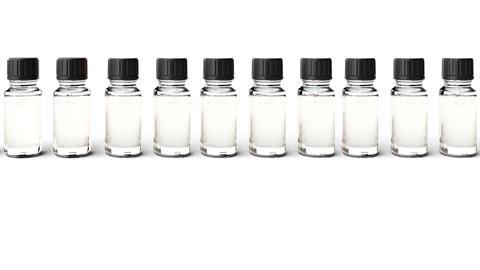

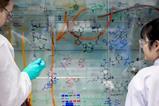


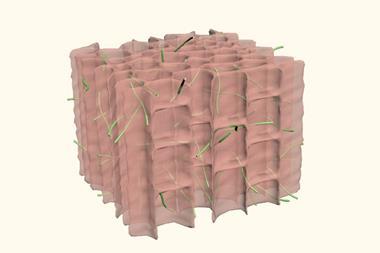
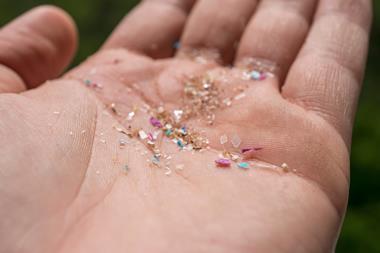

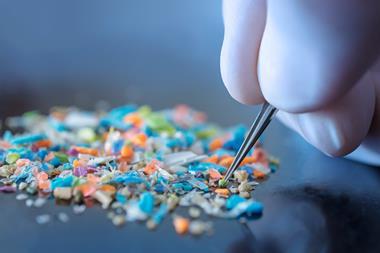
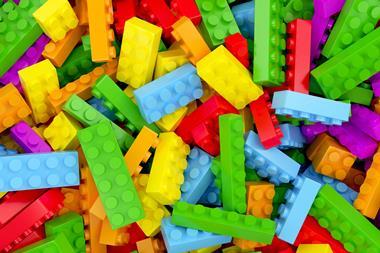
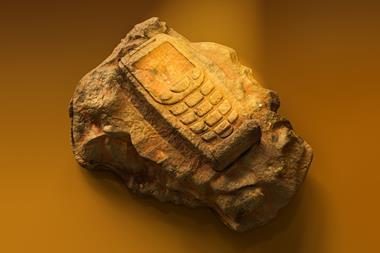






No comments yet